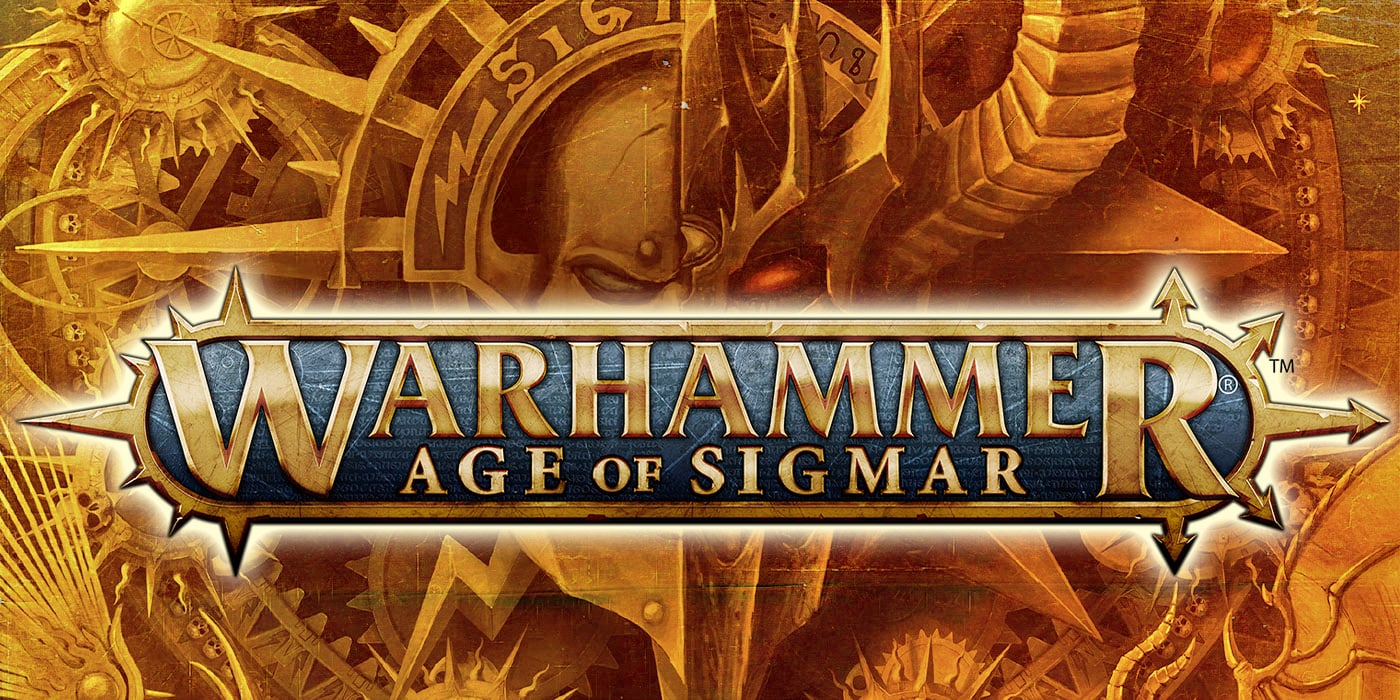Interview: Age of Tyrants
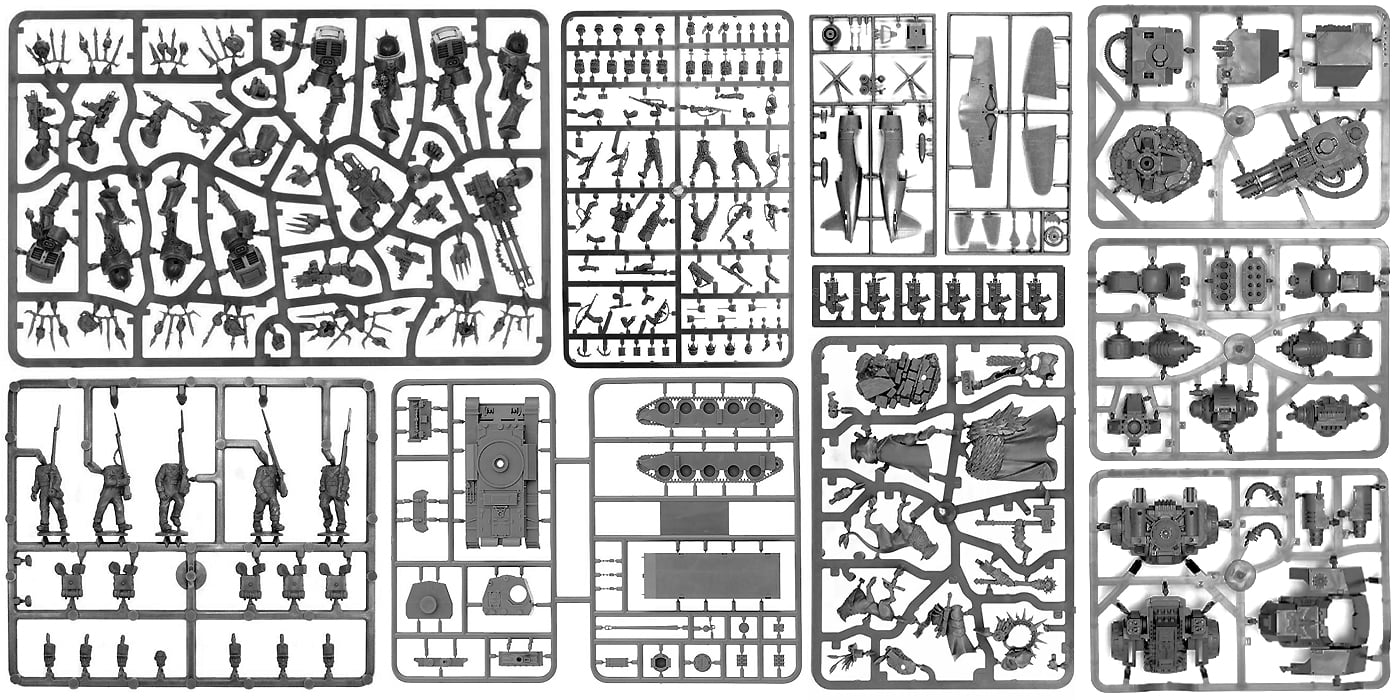

 After the two-part system review I now had the chance to talk to one of the game designers of Age of Tyrants about the game and their upcoming Kickstarter campaign – Enjoy!
After the two-part system review I now had the chance to talk to one of the game designers of Age of Tyrants about the game and their upcoming Kickstarter campaign – Enjoy!
In case you missed it, here are the links to part I and part II of the review.
Me: Who are you and what is your position at Myriad Miniatures?
Mark: Mark Brendan, game designer and writer
Me: When did you start working on AoT? It has been around for quite a while, hasn’t it?
Mark: We started it back in 2008, and it’s been through several iterations since then
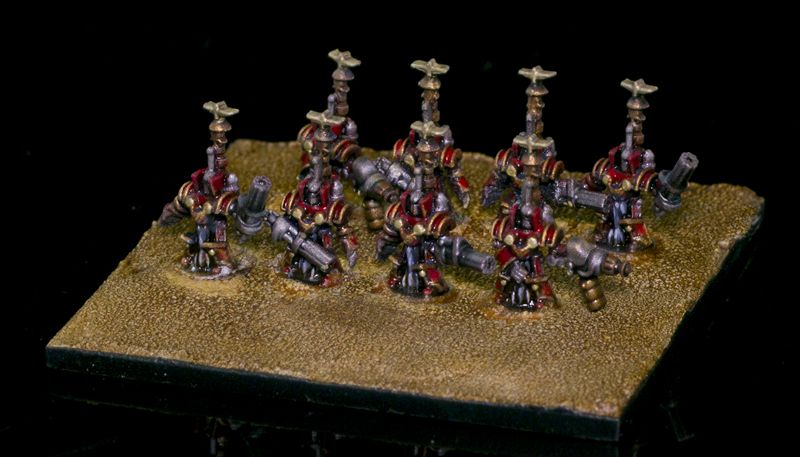 Junkers Alectii Exo-Suits are heavily armored shock-troops
Junkers Alectii Exo-Suits are heavily armored shock-troops
Me: How many people are working on AoT?
Mark: 16 at the last count, and there have been others along the way who have since dropped out
Me: Why a 6mm game?
Mark: The scale is right for the level of warfare we’re trying to replicate here. Proper large scale engagements, company vs. company, using a full range of combined arms tactics inspired by by WWII.
Me:Describe AoT in three words!
Mark: Massive, Strategic, Slick
Me: Give us a short introduction to the universe of AoT!
Mark: AoT is set in the Draconis Alba galaxy of an alternate universe. Mankind evolved here too, as a technologically advanced species, and they have colonised the galaxy. Four factions dominate what is known as Pan-Humanic Space. The despotic and aggressively expansionist Junkers, who have their origins on the desert penal colony of Ironglass, the trading and agriculturalist Viridians, from humanity’s home planet of Viridia, the secretive, high tech collective of the Syntha, who are based on the planetoid Prime, and finally VASA, the galactic peacekeeping and customs force. during the Age of Tyrants, these four great factions descended into open war with another.
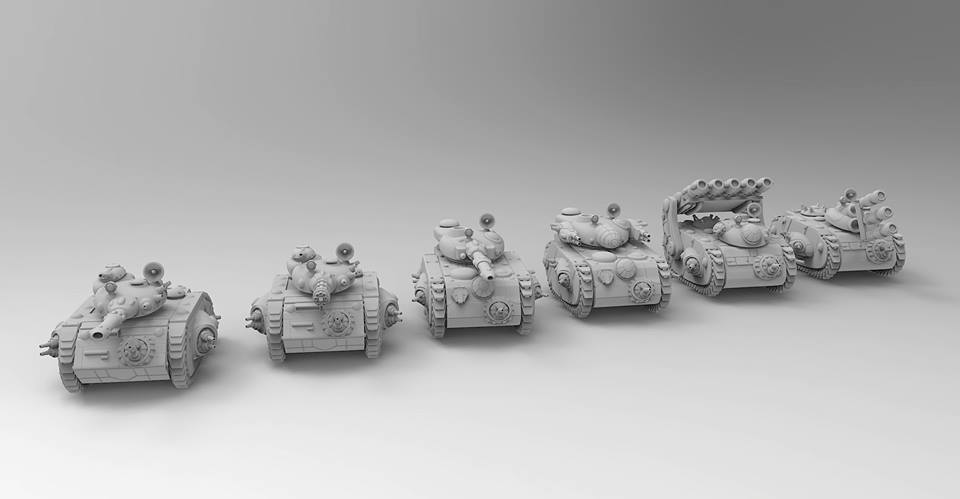
 Behold the might of Viridian armor!
Behold the might of Viridian armor!
Me: How big is a game of AoT, and how long does it take to play?
Mark: A typical game is a company vs. a company. We reckon such a battle will last about an hour after setting up terrain.
Me: Please give us a short overview how to build an army for AoT!
Mak: Each company is made up of a captain and four platoons of your choice, with a platoon comprising four bases. A base mounts either a squad of approximately a dozen standard infantry (there are also specialists and weapon crews that are are fewer to a base than this), or a single large vehicle. If we achieve some of our stretch goals, there will be more, lighter vehicles that will be 2-3 per base. You can choose any four platoons you like within the points limit you and your opponent agree. Infantry bases are cheap at 1 point a base, transports and elite infantry are 2 points a base, and tanks and artillery 3 points a base,
Me: What distinguishes AoT from other games?
Mark: The command and control system. When you give orders you select a leader, either the captain, or one of the platoon lieutenants. They each have a number of command points with which they can activate bases to do stuff like move, take R&R to reduce suppression (a combination of casualties, loss of morale, damage and fatigue), or attack enemies. When attacking enemies you can get a combined arms effect by ganging up on a target, with one of your bases directly attacking it, while others support, e.g. a base of Junker Legionaries moves to close assault range to attack a Viridian Marine base, while a couple of bases of artillery pounds it with support fire. The Marines are in trouble.
Leaders can give orders to bases outside their direct command (captains command all bases in their company, lieutenants all bases in their platoon), but it costs more command points to do so. Towards the end of a turn, some bases may not have recieved orders from a leader, so they get to act individually, but by definition they’re a lot less effective like this.
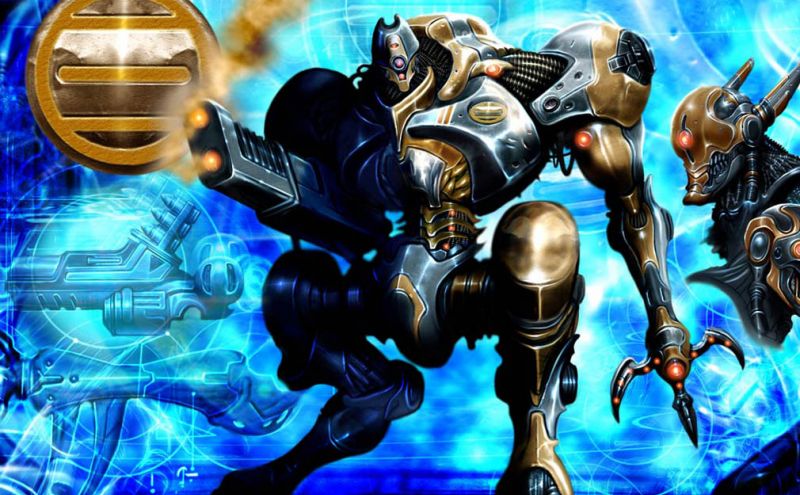 Syntha relies on combat automatons like this T-Synth
Syntha relies on combat automatons like this T-Synth
Me: Another important mechanism is the suppression system. Can you tell us something about its origins?
Mark: The command and control system is the real heart of the game, but suppression does come into play with it. The more suppressed a base is, the more command points it costs to activate, and this stacks with giving orders to bases outside the leader’s command. Also, leaders with suppression get fewer command points. In this way, suppression is the killer of armies, as it builds up it paralyses the leadership’s ability to effectively command their force. More and more bases have to act independently, where they are a lot less effective than combining their efforts.
In an earlier iteration, bases that didn’t recieve an order were forced to take a default order, based on how much suppression the base had. It was a nice idea in theory, but in practise it overcomplicated things, so the feature was cut.
Me: Over the different iterations of the ruleset, which was the most important lesson you’ve learned?
Mark: Keep it simple.
Me: What was your inspiration for the look and feeling of each faction?
Mark: The Junkers are a mix of Roman Legionaries (obviously) and Dune, Viridians are your classic Vietnam era GI type guys, the Syntha have a bit of a cyberpunk, anime thing going on, and VASA are very WWII Soviet.
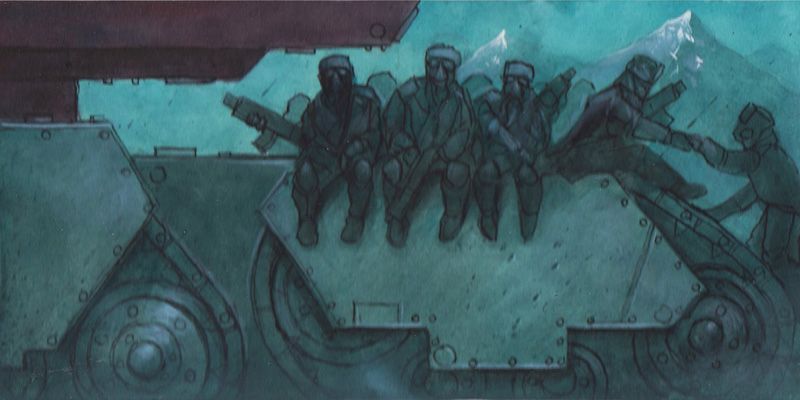 Tank Riders are a common sight in VASA formations
Tank Riders are a common sight in VASA formations
Me: Why did you choose to give every faction a similar set of units instead of very different ones?
Mark: In all honesty, this was a production call back at the start of the project, where we were going to do something quick and simple to see where it went, but instead it has grown, so we’ve retained those forces as a core. You’ll see some more variation come in with the expansions, though we have retained that sense of similarity. From a rules point of view it saves a lot of headaches because we have such a simple points system. This helps maintain parity between the forces as there’s not a lot of wriggle room when your range is 1-3 points.
Me: Why did you chose to set the game in the past of the Urban War timeline?
Mark: Mainly the same answer as above. We wanted to initially just do the four human factions, so we chose to set it prior to first contact with the Koralon.
Me: Do you think that limits you in what you can do, because you already know the outcomes of certain events?
Mark: Nah, there’s always room to tweak things if need be. It’s not done lightly, and the old canon provides a useful framework, but things have got to evolve (see for example the change in style of VASA from being Samurai and Japanese themed to Soviet Russian themed between Void and Urban War)
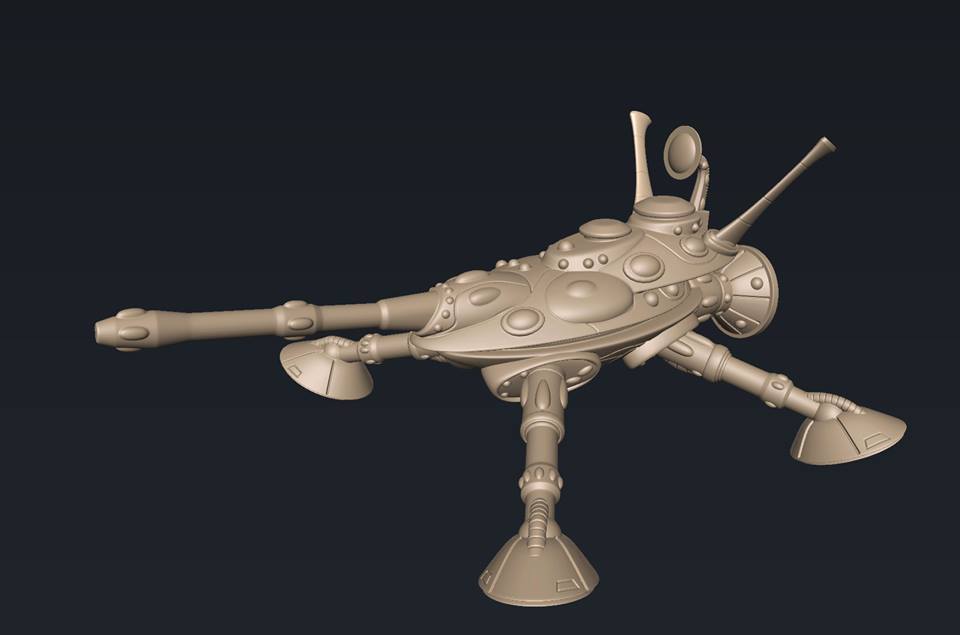 The Syntha Nemesis tank is armed with a long range anti-armour plasma weapon and a a tesla field to protect it from close assaults
The Syntha Nemesis tank is armed with a long range anti-armour plasma weapon and a a tesla field to protect it from close assaults
Me: What was your inspiration for each faction?
Mark: Viridians are inspired by modern NATO armies, highly mobile, with a philosophy of leaving no soldier behind. Junkers are a close combat meat grinding machine with a lot of artillery, so they really are like the Romans. Synths are the slightly weird, sci-fi ones, like something from I, Robot or The Terminator, they’re relentless and implacable, but predictable. VASA are the tank guys and have command cards that enable tanks to operate as tranports (like the tank desant troops in WWII).
Me: At the moment, AoT covers ground warfare with infantry and vehicles. Will we see flyers or large walkers in the future? Or maybe even naval combat?
Mark: Yep, the things you mention are all on the cards for expansions, except our walkers are smaller scale manned ones, unlike Battletech or similar. Naval is not on the cards yet.
Me: Are you going to introduce the other factions like Triads, Neo-Iskandrians and Koralon later, too?
Mark: Also, yes, if the Kickstarter does well enough, we’ll move the timeline on and add these.
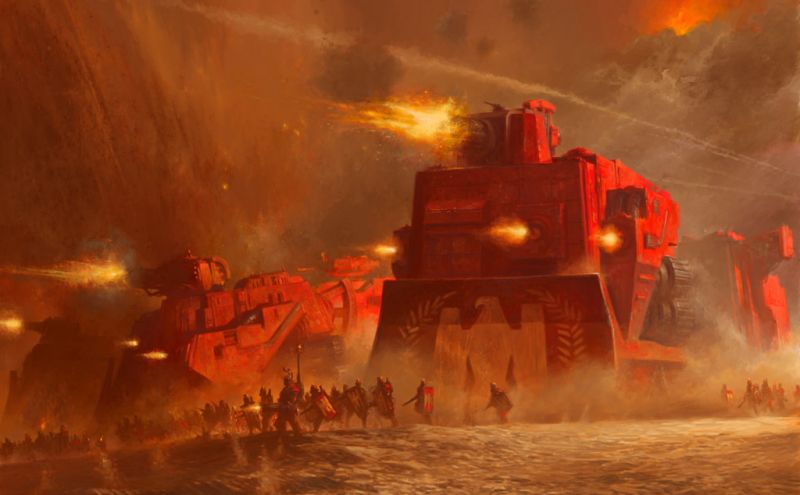 Junker attacks involve waves of soldiers following a devastating artillery bombardment
Junker attacks involve waves of soldiers following a devastating artillery bombardment
Me: Talking about the Kickstarter, what can people expect from your campaign?
Mark: The main pledge levels will be centred around buying custom companies, where the player can choose platoons. If we reach certain stretch goals, then we’ll add rules expansions and more types of platoon to choose from (recon units, fliers, CLAUs, etc), and ultimately, if we do very well, then the new factions.
Our development work is done on this, so when backers pledge, they can be confident that the game will be delivered. We just need the Kickstarter to fund production and shipping, and to recoup the development costs.
Me Will there be a full-fledged (printed) rulebook with fluff and all of that, or are you going to stick with the free rules download?
Mark: There will be a printed version and a free download. The printed one will be available as an add-on for separate purchase, or included with certain pledge levels.
Me: What are you plans for the future?
Mark: If we attain all the stretch goals we plan then we want to devleop an online campaign system for the range to support folk that start playing the game with various rewards and perhaps new command cards and heroes. Beyond that it will be enitrely down to how well the product is received.
Me: Thanks a lot for taking the time to answer my questions!
I hope you enjoyed this interview. Myriad Miniatures was so kind to send me a couple of tanks for a review, yo keep your eyes peeled for that article in the near future!
If you are interested in Age of Tyrants, please visit their website or join them on facebook!


